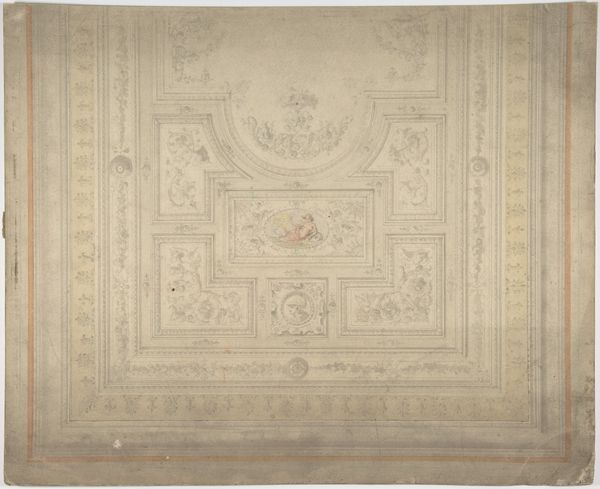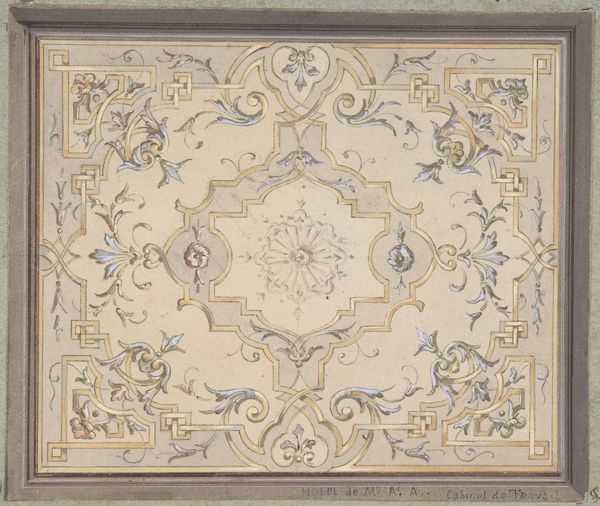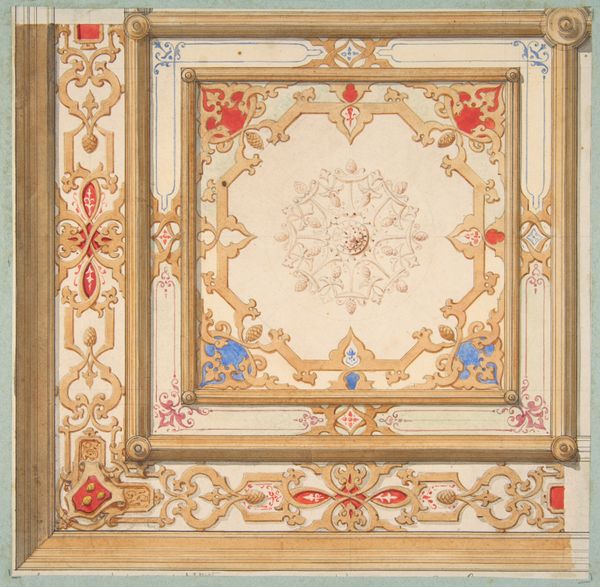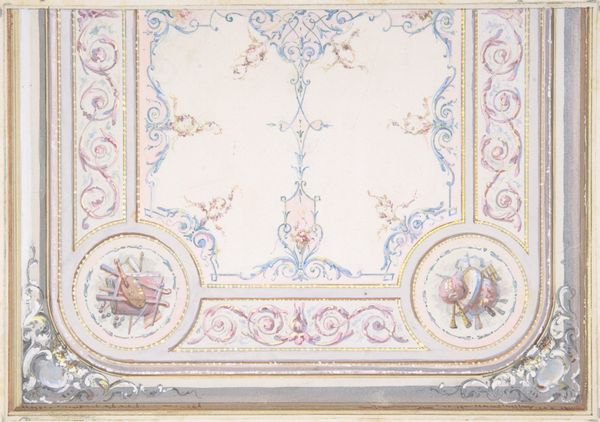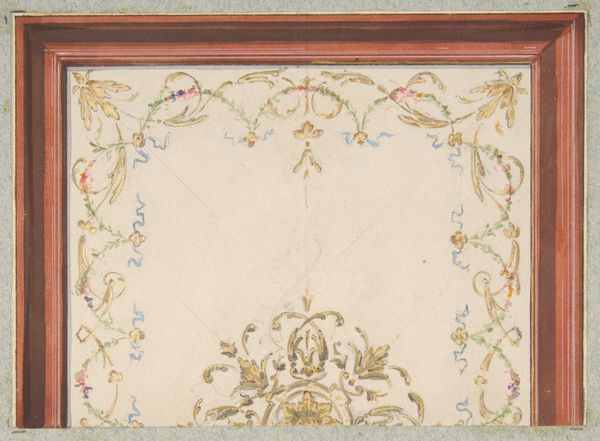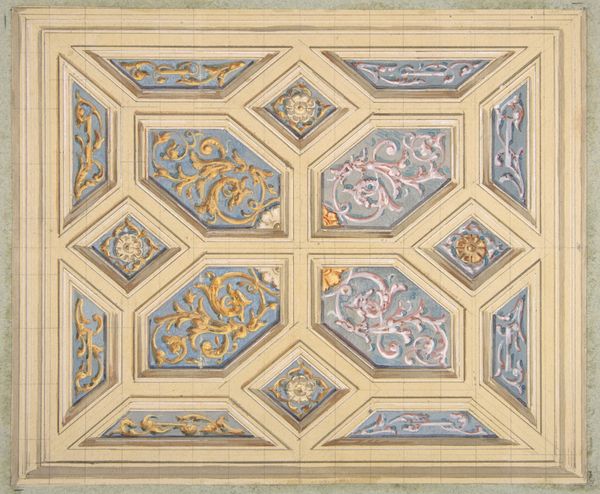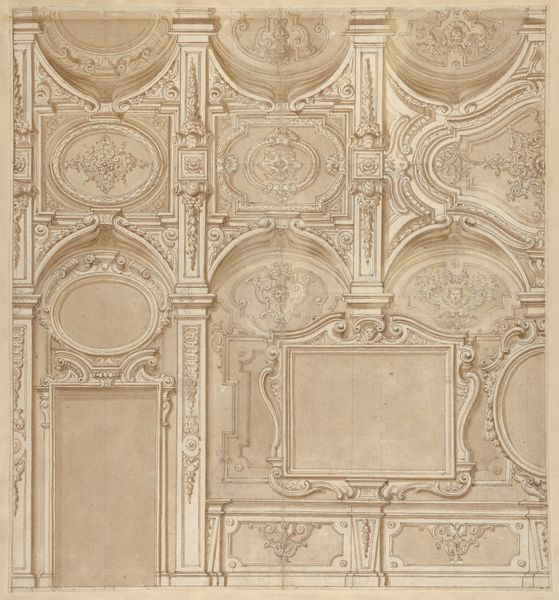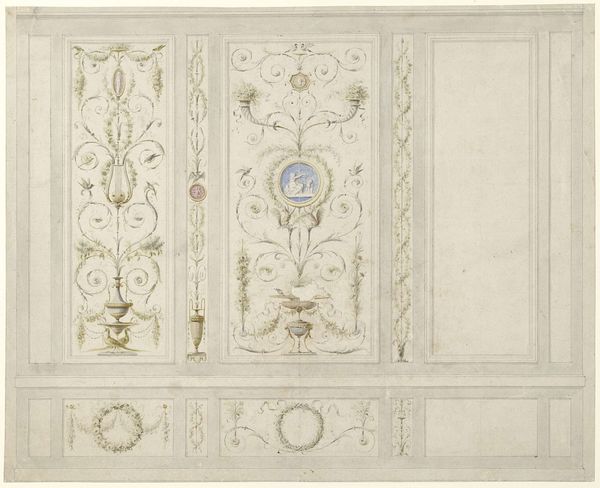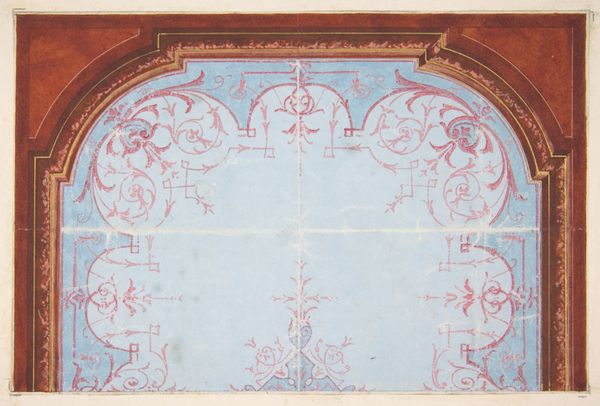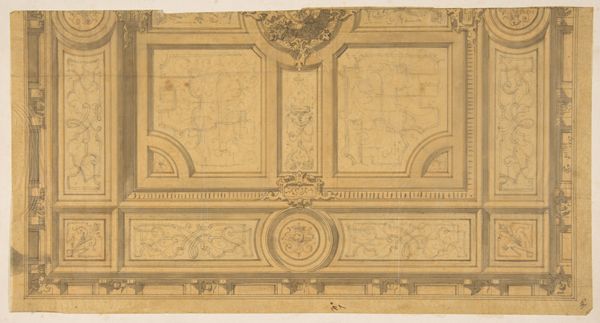
drawing, coloured-pencil, tempera, print, pencil, mural
#
drawing
#
neoclacissism
#
coloured-pencil
#
tempera
# print
#
romanticism
#
pencil
#
mural
Copyright: Public Domain
Editor: Here we have an anonymous 19th-century drawing titled "Ceiling Design, Half of a Circle," rendered in pencil, colored pencil, tempera, and print. It's currently housed at the Met. I'm really struck by the ornate detail, yet there's something quite restrained about the muted color palette. How do you interpret this work in the context of its time? Curator: The restrained palette, in dialogue with such overt ornament, presents a fascinating tension, doesn't it? Consider the 19th century: revolutions, shifting power dynamics. Neoclassicism, evident in the design, harkens back to a perceived golden age of order and reason. But romanticism simmers beneath. Editor: So the design could reflect broader societal tensions between order and upheaval? Curator: Precisely! Think about who would commission such a design. The aristocracy clinging to power? A rising bourgeoisie attempting to legitimize themselves through association with classical ideals? Who benefits from perpetuating ideals of order and beauty? This artwork becomes a site where power and ideology are negotiated. Editor: It's almost like the ceiling itself becomes a canvas for projecting societal aspirations and anxieties. But where do ideas of identity, gender and race fit into a ceiling? Curator: Good question! Consider this. Ceilings traditionally function as places of elevation; so in a socio-political setting it embodies a hegemonic ‘high ground’ that normalizes privilege, access and class divides within society. In what other ways can we imagine and express this ‘high ground’ within a culture? Editor: Wow, I hadn't considered it that way before. I see now how the aesthetic choices can reflect deeper cultural currents. Curator: Indeed! And by interrogating these designs, we start to question whose values are literally elevated and whose are suppressed. It forces us to consider the unseen labor and social structures upholding even the most beautiful facades. Editor: That's given me a completely different way to appreciate not just this drawing, but also the art around us and the power structures inherent within the art!
Comments
No comments
Be the first to comment and join the conversation on the ultimate creative platform.
